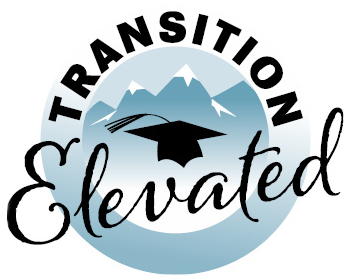A
ABLE Accounts
Tax-advantaged savings accounts designed specifically for individuals with disabilities to cover qualified expenses, thereby supporting long‑term financial independence.
Adult Education
Programs and services aimed at providing adults with the skills necessary for personal, academic, or professional growth, often including pathways to continued education after high school.
Americans with Disabilities Act (ADA)
A comprehensive civil rights law that prohibits discrimination against individuals with disabilities in all areas of public life, including employment, education, and access to services.
C
Career and Technical Education (CTE)
Educational programs that combine academic instruction with technical and vocational training to prepare students for specific careers. CTE enhances transition planning by providing practical, career-focused skills.
Career Development Credential (CDC)
A career-focused credential earned in addition to a high school diploma or equivalent. It is designed to prepare students with disabilities for successful outcomes in postsecondary education and employment.
Charting the Life Course
A set of planning tools and resources—including timelines, goal-setting worksheets, and checklists—that help students, families, and educators map out the steps required for a successful transition to adulthood.
D
Disability Determination Services
Programs that assess eligibility for disability benefits and services. These services help determine the supports a student may need during the transition process.
Disability Rights Center
An advocacy organization dedicated to protecting the rights of individuals with disabilities. These centers provide resources and support to help ensure equal access to education and employment opportunities.
E
Employment & Vocational Services
Programs and supports—such as job training, career counseling, and work-based learning—that assist students with disabilities in preparing for, obtaining, and maintaining employment after high school.
G
Guardianship
A legal process by which a court appoints an individual to make decisions on behalf of someone unable to make decisions independently. In transition planning, guardianship may be considered when additional decision-making support is necessary.
I
Individuals with Disabilities Education Act (IDEA)
A federal law ensuring that students with disabilities receive free appropriate public education. IDEA mandates the development of an Individualized Education Program (IEP), which includes transition planning for eligible students.
IEP (Individualized Education Program)
A legally binding document developed for each student with disabilities that outlines individualized educational goals, services, and accommodations. The IEP includes the Postsecondary Transition Plan when the student reaches the appropriate age.
O
Outside Agency
An organization external to the school system that provides additional services and support to students with disabilities, such as employment, independent living, or healthcare services.
P
Person-Centered Planning
A planning approach that focuses on the individual’s strengths, interests, and goals, ensuring that the student’s voice is central to the development of a tailored transition plan.
Person Centered Planning Tool
A resource that facilitates the creation of an individualized transition plan by focusing on the student’s personal strengths, preferences, and future goals.
Postsecondary Transition Assessment
Comprehensive evaluations that measure a student’s readiness for postsecondary education, vocational training, and independent living. The results guide the development of a tailored transition plan.
Postsecondary Transition Plan (PTP)
A detailed, legally mandated document that outlines a student’s postsecondary goals in education, employment, and independent living. It includes specific services and supports needed to bridge the gap between high school and adult life and is developed as part of the IEP.
S
Self-Advocacy
The ability of a student to understand their rights, express their needs, and make decisions that influence their own future. Self-advocacy is a critical component of successful transition planning.
Self-Determination
The capacity to make choices and exercise control over one’s own life. In transition planning, self-determination emphasizes empowering students to set their own goals and actively participate in decision-making.
Self-Determination and Self-Advocacy Padlet
An interactive online resource designed to build self-advocacy skills and promote self-determination among students with disabilities.
T
Transition Elevated App
A digital application that supports the transition planning process by enabling students and families to document goals, track progress, and prepare for IEP meetings.
Transition Planning Timeline
A structured schedule that outlines key milestones and activities for transition planning, ensuring that the process begins early and proceeds in an organized, measurable manner.
Transition Services
A comprehensive range of supports provided to students with disabilities that prepare them for postsecondary education, employment, and independent living. These services may include academic instruction, vocational training, counseling, and community-based experiences.
Transition University
An educational platform that offers workshops, training sessions, and resources designed to prepare students and families for the transition to postsecondary life.
U
Utah Assistive Technology Teams (UATT)
Collaborative teams that provide expertise, resources, and support in selecting and implementing assistive technology for students and adults with disabilities.
Utah Center for Assistive Technology (UCAT)
An organization that offers services, training, and support to assist individuals with disabilities in effectively utilizing assistive technology.
Utah Work Incentive Planning Services (UWIPS)
Services that help students and individuals with disabilities navigate employment benefits and support systems as they transition into the workforce.
Y
Youth In Care (YIC)
Programs and services specifically designed for students in the foster care system, including specialized support for the transition to independent living and adulthood.
